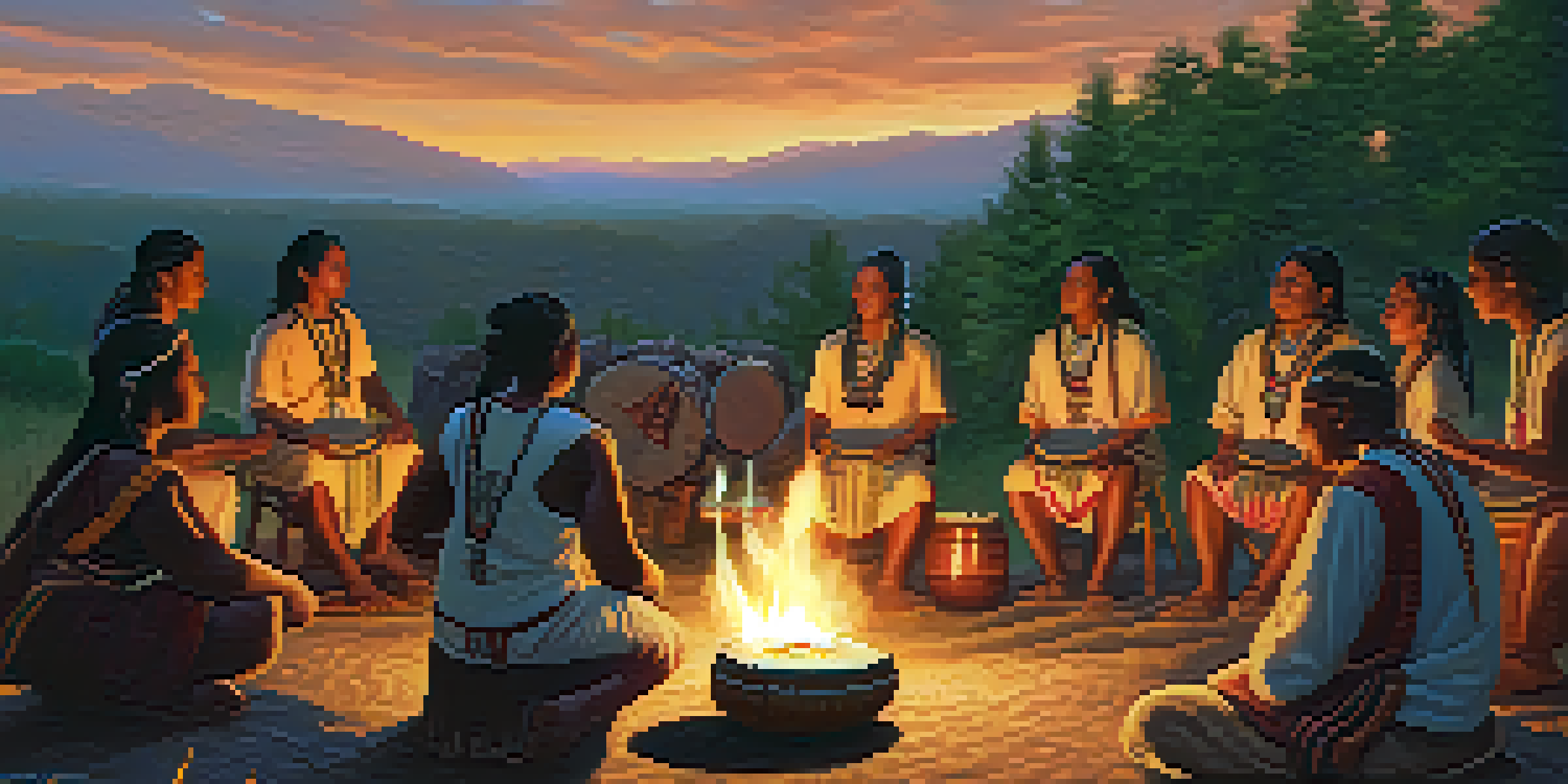Cultural Perspectives on Music as a Healing Practice

Understanding Music as a Universal Language of Healing
From ancient rituals to modern therapy, music transcends barriers. It's a universal language that speaks to the soul, often resonating deeply within us. In many cultures, music serves not just as entertainment but as a vital component of healing practices.
Music can change the world because it can change people.
For instance, Indigenous cultures often incorporate music into their healing rituals. Drumming, singing, and chanting are believed to connect individuals to the spiritual world, facilitating emotional and physical healing.
This shows us that music isn't merely a backdrop; it's an active participant in the healing journey. By tapping into this universal language, we can foster a sense of community and shared experience, enhancing the healing process.
Traditional Healing Practices and Their Musical Roots
Many cultures have long recognized the therapeutic power of music. Traditional healing practices in places like Africa often include songs, dances, and rhythms that are believed to restore balance and harmony within individuals and communities.

In these settings, music is often an integral part of ceremonies that address both physical ailments and emotional issues. For example, the San people of Southern Africa use songs to engage with their ancestors, seeking guidance and healing through their melodies.
Music as a Healing Universal Language
Music transcends cultural barriers and plays a vital role in healing practices across various societies.
This relationship between music and healing highlights how deeply intertwined cultural identity and health practices can be. By understanding these traditions, we gain insight into the profound impact music can have on our overall well-being.
Music Therapy: Bridging Cultures and Healing Methods
In recent years, music therapy has gained recognition as a legitimate form of treatment across various cultures. This approach combines traditional musical practices with modern therapeutic techniques to address a wide range of mental and physical health issues.
Where words fail, music speaks.
For instance, in Western cultures, music therapists often use familiar songs to evoke memories and emotions in patients with dementia. Similarly, in Eastern cultures, traditional instruments may be employed to promote relaxation and mindfulness.
This blending of cultural practices not only respects the rich heritage of music but also demonstrates its versatility as a healing tool. It emphasizes that music can be both a cultural artifact and a modern therapeutic ally.
The Role of Rhythm and Melody in Emotional Healing
Rhythm and melody play crucial roles in how music affects our emotions. Different cultures have unique rhythmic patterns and melodic structures that can evoke specific feelings, making music a powerful therapeutic tool.
For instance, the soothing melodies of Indian classical music are often used to calm the mind and promote relaxation. In contrast, the upbeat rhythms of African drumming can energize and uplift, creating a sense of community and joy.
Integration of Music Therapy
Modern music therapy combines traditional practices with contemporary techniques to address mental and physical health issues.
Understanding these cultural nuances helps us appreciate how music can be tailored to individual emotional needs. By tapping into these diverse musical traditions, we can enhance emotional healing experiences for people from different backgrounds.
Music's Role in Mental Health Across Cultures
Mental health challenges are universal, and music often serves as a coping mechanism across cultures. In many societies, music is used to express feelings that may be difficult to articulate verbally.
For example, in Japan, practices like karaoke provide an outlet for stress relief and emotional expression. Similarly, in Latin American cultures, communal music and dance are integral to celebrations and healing gatherings, fostering a sense of belonging.
These cultural expressions highlight how music can provide solace and understanding during challenging times. By embracing diverse musical approaches, we can promote mental health and well-being across various communities.
The Physical Healing Power of Sound and Vibration
The physical effects of sound and vibration are also significant in many cultures. Practices such as sound baths or Tibetan singing bowls focus on using specific frequencies to promote healing on a physical level.
Research suggests that these vibrations can reduce stress, lower blood pressure, and alleviate pain. In some Indigenous cultures, the use of rattles and drums during healing ceremonies is believed to resonate with the body, aiding in recovery.
Future of Music in Healing
The integration of music into healthcare is growing, with innovative technologies enhancing its therapeutic benefits.
These practices illustrate that music is not just an emotional experience; it can also have tangible physical benefits. By exploring these connections, we can better understand the holistic nature of healing through music.
The Future of Music as a Healing Practice
As we move forward, the integration of music into healing practices is likely to grow. With increasing recognition of its therapeutic benefits, more healthcare professionals are incorporating music into treatment plans.
Innovations in technology, such as virtual reality experiences that include music, are also emerging. These advancements provide new ways to engage with music and explore its healing properties in a modern context.

Ultimately, the future of music as a healing practice looks promising. By celebrating diverse cultural perspectives and embracing new technologies, we can unlock the full potential of music in promoting health and well-being.